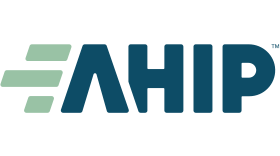
- February 2023
- Volume 29
- Issue 2
- Pages: SP92
The Role of Specialty Pharmacies in Improving Prescription Drug Access and Affordability for Consumers

Every American deserves access to affordable, high-quality coverage and care, including access to the medications they need at a cost they can afford. Health insurance providers and pharmacy benefit managers (PBMs) are Americans’ bargaining power, negotiating savings for millions of patients every day. And every day, they are building new approaches to improve prescription drug affordability and access. Specialty pharmacies that directly deliver medications for patients are one important example of an innovative solution that works.
An article that appeared in Evidence-Based Oncology™ in October 20221 got a few key facts wrong about how specialty pharmacies work. It is true that some PBMs may own a specialty pharmacy. But decisions to utilize specialty pharmacies for white or brown bagging for their plan enrollees are made by the plan sponsor—such as public and/or private employers along with health insurance providers. Accordingly, these specialty pharmacies do not, in any way, limit from whom a provider can source their drugs for patients whose insurance coverage pays for them under non-white or brown bagging reimbursement arrangements, and as such, providers still have the ability to choose the supplier for the drugs they are prescribing and administering to patients. Coincidentally, many providers often source their specialty drugs from the same specialty pharmacies that supply the medications used in white and brown bagging.
Although they are a newer development in health care, specialty pharmacies are based on a very straightforward approach. Specialty pharmacies—who often supply these same providers when they purchase these medications themselves—simply ship a patient’s physician-administered drugs directly to the provider ahead of his/her appointment, delivering the drugs quickly and conveniently when they are needed and typically at a lower cost.
Specialty pharmacies also relieve the provider from the administrative burden and cost of maintaining their own stock of specialty drugs, while significantly saving patients and payers from the marked-up prices charged by those providers.
Let’s look at how that works. Before the advent of specialty pharmacies, health plan reimbursement for physician-administered drugs relied on a “buy and bill” arrangement first set, and still used by, the Medicare Part B program which covers outpatient medical services such as these. Under this arrangement, the physician acquires and stores the drug in their office for administration to their patients as needed. Medicare reimburses the physician for the full cost of the drug, then adds 6% of that drug’s cost to cover the cost of administering the medication to the patient along with storage and other administrative costs involved; this rate is known as the average sales price + 6% (ASP + 6%).
Because the provider will always be fully reimbursed for the cost of acquiring the drug under these buy and bill arrangements, there is no incentive to purchase the drug at lower prices among competing suppliers. Moreover, while the ASP + 6% rate remains constant, the higher the drug’s price, the greater the amount captured by the administrative fee. In economic terms, the provider has no price sensitivity for the products they acquire, administer, and bill to patients in terms of being reimbursed for the price of drug itself. And in fact, these specialty drugs have become a highly lucrative source of income for all kinds of providers—from hospital outpatient facilities to infusion clinics.
Medicare’s reimbursement practices have, until now, had an outsized influence on commercial insurance payment arrangements for physician-administered drugs because no alternative approaches were available. None, that is, until the advent of direct delivery of these medications by specialty pharmacies. Specialty pharmacies disrupt the buy and bill arrangement by no longer relying on the provider to supply the drug being used for administration to the patient. Instead, the plan sponsor—through their arrangements with specialty pharmacies—acquires the drug. The physician is still paid to administer the drug to the patient—while the patient is able to avoid a costly markup for a service that adds no value for them.
Health insurance providers agree that market competition plays a critical role in driving down health care costs for Americans. However, free market competition is not fostered by forcing health plan sponsors and patients to pay exorbitant price markups to providers—markups over and above the already high prices for these drugs set by pharmaceutical manufacturers.
One recent study identified widespread price markups by providers being charged to patients and health plan sponsors ranging from 120% to 630% for 25 commonly used physician-administered cancer drugs.2 Another study by AHIP found that for 10 commonly prescribed specialty drugs, physician/hospital markups averaged $1429 and $7069, respectively over the specialty pharmacy’s cost for the same medications.3
No one should be forced to pay these out-of-control prices when a much more affordable option is available to them. That is why direct delivery by specialty pharmacies is so important.
Drugmakers create lifesaving treatments and breakthrough cures. But a therapy is useless if no one can afford it. Physician markups exacerbate the problem of out-of-control drug prices.
Solutions like specialty pharmacies improve competition, affordability, and choice. That is why health insurance providers, PBMs and plan sponsors agree that these specialty pharmacies are an important way to root out wasteful spending and stretch their health care dollars to expand access to these drugs for their patients. Let’s continue to work together to find real solutions to improve prescription drug affordability and access for everyone.
Author Information
Sergio Santiviago, JD, is vice president of drug policy—Federal Programs, AHIP; Jeanette Thornton, MPA, is executive vice president of public policy and strategy, AHIP.
References
1. Winegarden W. Replacing white bagging mandates with market competition will improve patient outcomes. Am J Manag Care. 2022;28(Spec 7):SP248.
2. Conti RM, Turner A, Hughes-Cromwick P. Projections of US prescription drug spending and key policy implications. JAMA Health Forum. 2021;2(1):e201613. doi:10.1001/jamahealthforum.2020.1613
3. AHIP. Hospital price hikes: markups for drugs cost patients thousands of dollars. AHIP website. February 16, 2022. Accessed January 24, 2023. https://www.ahip.org/resources/hospital-price-hikes-markups-for-drugs-cost-patients
Articles in this issue
almost 3 years ago
Our Rashomon Momentalmost 3 years ago
Managed Care & Clinical Updates: February 2023almost 3 years ago
Recent FDA Actions: February 2023almost 3 years ago
From Our Partners: February 2023almost 3 years ago
Finding Quality in Cancer Care Beyond the Hospital Wallsalmost 3 years ago
Center on Health Equity & Access: February 2023Newsletter
Stay ahead of policy, cost, and value—subscribe to AJMC for expert insights at the intersection of clinical care and health economics.







































